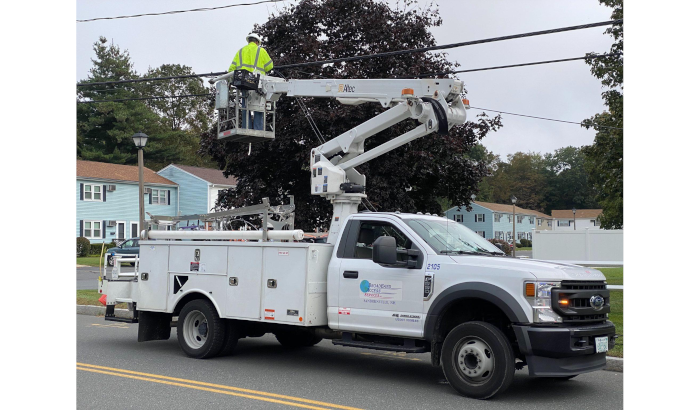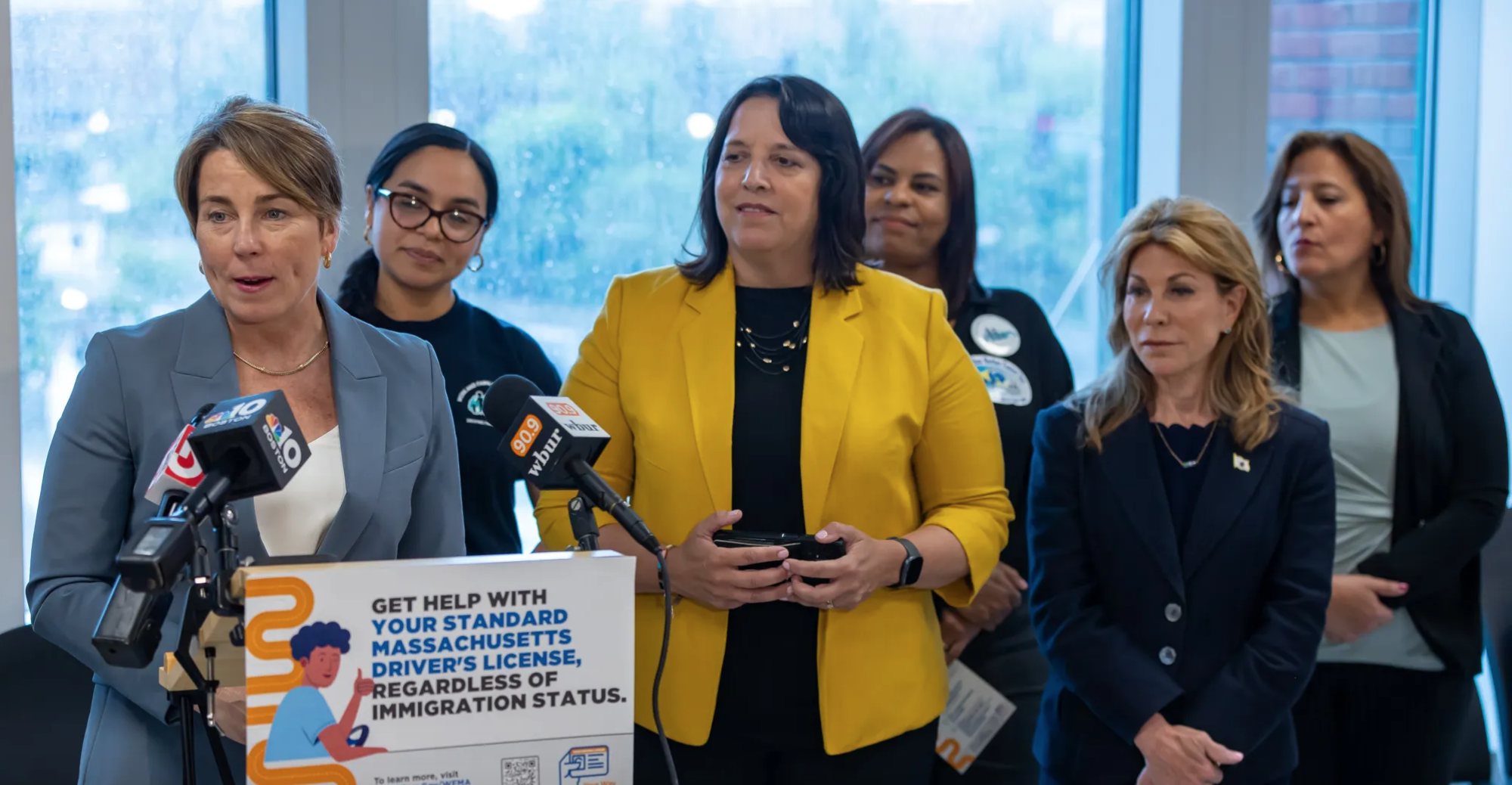
With the MBTA still very broken, agency lacks clarity in communications with contractors, commuters
“We shouldn’t have to be backtracking and deciphering contract packages to figure out when the T will get work done.”
The MBTA is preparing to pay contractors $72 million over the next two years to repair tracks and “support an aggressive reduction” in areas under speed restriction in order to comply with federal directives, according to bid documents.
The T is taking bids as new general manager Phillip Eng takes control of the agency, and as he just announced plans to shut the entire Blue Line down for several nights in April and May for repairs.
But the full scope of the T’s track repair remains unclear, and transit advocates say officials need to explain what still needs to be done—and why the T’s tracks have fallen into such disrepair in the first place.
“The T owes riders a clear explanation of what work has been done and what work needs to be done and why—after a full line was shut down—there is still work being performed on the Orange Line,” TransitMatters Executive Director Jarred Johnson said in an interview. “Who is in charge of engineering at the T? Who has not been keeping up with track inspections? Who was signing off on this critical work that was supposed to have been done?”

Slow zones
Last year, the Federal Transit Administration blasted the T in an audit following numerous derailments, crashes, and other safety failures, including the dragging death of a rider, Robinson Lalin, by a Red Line train. The FTA ordered the MBTA to increase safety training and hire more employees along with numerous other special directives—including orders to fix tracks after years of deferred maintenance.
As part of those repairs, the T shut the Orange Line for a month during last summer, saying the repairs made during that time would positively impact slow zones along the line. But a few months later, reports showed many slow zones were still in place.
Last month, T officials placed the entire subway network on speed restriction following a Department of Public Utilities inspection of the Red Line, and the subsequent discovery that the T lacked paperwork proving it addressed other track problems noted in a prior DPU inspection. The Green Line remained under speed restriction for two weeks, and all lines continue to have slow zones across their service areas. According to an MBTA bid document released April 7, 31.9% of heavy rail track on the Blue, Orange, and Red Lines remains under speed restriction, while more than two miles of light-rail track on the Green Line is also under speed restriction.
“Per [FTA order], the MBTA must develop and implement a special maintenance repair plan to reduce the percentage of system track currently under speed restriction,” T officials wrote in the bid document. “By bringing the system to a State of Good Repair, the Authority aims to increase the safety and reliability of the service to the community.”
Three teams, $72 million
The April 7 solicitation document was an addendum to a 2,300-page bid the MBTA released in March, looking for three on-call contractors to work on track repairs ranging from immediate to longer-term projects over the next two years. The contracts have a ceiling of $72 million, but no set amount of spending is guaranteed, MBTA spokesperson Joe Pesaturo explained in an email.
The work is divided into three time frames:
- Emergency repairs to “address immediate safety concerns or operational and public impacts” that need to be made within two hours
- Urgent work that must be completed within 24 hours
- Other work that can take longer than a day.
The bid lays out work plans for “surges” and assignments that would take longer than six months, but Pesaturo said, “No single work activity is expected to exceed six months.” And the work is defined by when it will be completed, like overnight when the T is shut down, via weekend diversions, and during long-term diversions. And there are the types of sites where track and other materials will be replaced, like at-grade crossings or tunnels and inclines.
The bid also lists examples of potential repairs, emphasizing said examples are “not intended to indicate the actual contract scope of work.” Nevertheless, the examples include: replacing railway ties on the Braintree Line southbound track from Braintree Station to the Elm St. Bridge; replacing CWR (continuous welded rail) on the Green Line; and replacing track and contact rail in the Blue Line tunnel.
The bid doesn’t list specific sites, though Pesaturo said none of the work will “replicate or replace” work done during the Orange Line surge. Instead, it describes a general area, time period, and the amount of material needed. And that description has led to significant confusion between the T and the people it’s asking to bid on the work.

Questions and conditions
Each of the three bids contains more than 100 areas of work, from pouring concrete to welding to replacing rail. But the descriptions of that work, and the amounts of material the T was asking for, left bidders scratching their heads.
A typical line item in the original work bid is for heavy rail replacement, involves long-term diversion on the Red, Orange, and Blue lines, and asks for bidders to list a price for each unit of replacement.
The line item calls for a quantity of 1,334 units, but that number referred to a location of replacement representing one rail of a 500-foot section of track.
And those items covered large amounts of material—1,334 sections of 500-foot track sections equals more than 125 miles of rail. This and other huge quantities—including 460,000 railway ties—raised the eyebrows of multiple bidders, who asked for more information in question and answer sessions.
“The quantities on the bidform in Bid Express seem unrealistically high,” one questioner stated, according to publicly available bid documents. Another added, “Unless there are significant changes to the quantities for the bid items list above, the value of this contract will not even be close to the $24.4M engineers estimate.”
“The purchase price for just the rail of this item … exceeds the $24.4M advertised project budget,” another questioner wrote in reference to those 1,334 sections of rail. And another questioner saw an even greater discrepancy: “The resultant quantities … are now significantly greater than those expected of a $24.4M contract, and in some cases greater than the entirety of the MBTA system.”
Figuring out fixes
T officials initially said in response to questions for this article that they would determine the scope of work on a case by case basis, while Pesaturo said the T had “sufficient funding” for tie disposal. He said the quantities of material listed in the bid were estimated so the T could establish a unit price, and the MBTA would use individual work directives to cover the actual repairs and replacements.
“Quantities are not the focus of this bid price as these are subject to change and not finalized,” Pesaturo wrote in response to questions. Asked how many feet of track would ultimately be replaced through the contract, he also referred to estimated figures: “Quantities in an On-Call Contract are estimated. Quantities and scope of work are defined per the Work Order given to the contractor as work is identified. Bidders are to price work per the activity as described in the contract.”
Just this week, the T put out another addendum revising the scope of its request. Instead of using location-based measurements, the bid uses smaller units—the 1,334-unit CWR section now calls for 1,334 linear feet of rail, and the railroad tie disposal is now for 2,556 ties. That clarification was released on April 17—three days before bids are due on April 20.
Johnson, the TransitMatters executive director, said the MBTA needs to do a much better job explaining where and when work will take place, referring to the need for Blue Line service during the upcoming July and August shutdown of the Sumner Tunnel. And confusing bid information doesn’t help, he added: “We shouldn’t have to be backtracking and deciphering contract packages to figure out when the T will get work done.”
This article is syndicated by the MassWire news service of the Boston Institute for Nonprofit Journalism. If you want to see more reporting like this, make a contribution at givetobinj.org





